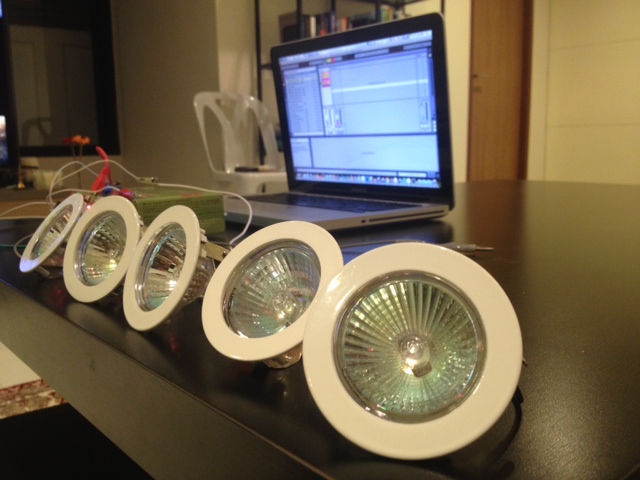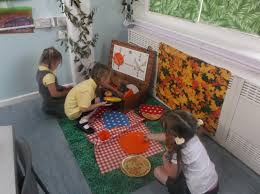
The course modules have thus far exposed us to a range of theories, concepts and approaches to adult learning. One additional consideration in our discussion of adult learning is how facilitators take into account the needs of adult learners in order to design effective educational programs. What are the principles and goals involved in such programs? How do we account for the changes in the learning environments in the digital age? The readings in this module address some of these questions and provide us with further insights into the subject.
Synthesis of Readings
Adult Learning in the Digital Age
Merriam and Bierema discuss in Chapter 10 the onset of the digital age and the increased use of technology in adult learning environments. The ease of access to information in today’s connected world affects adult learning in two distinct ways: either as “just-in-time, relevant and self-directed” or “overwhelming, inaccurate, and misguided” (Merriam & Bierema, p. 191). The chapter goes on to provide an overview of how adult learners engage with technology, the benefits and challenges in e-Learning contexts, and how educators may help adults to overcome some of these difficulties.

Planning Educational Programs
Brookfield & Holst’s Chapter Five provides a unique perspective on radicalized learning and the principles that make up adult education. The authors define principles as the “values of those who are responsible for the program (that) determine what is actually taught” (Brookfield & Holst, 2011). The authors proceed to describe the goals of program planning, which include an understanding of our sociopolitical economic context, the current era in history, the nature of change, and the need to meet the demands of the dispossessed (Brookfield & Holst, 2011).
ADDIE
The ADDIE model presented by BrainMass highlights the five stages of the training design process originally developed in 1975. The first step, “assess”, requires that the facilitator understands the needs of students, including the current skill level and the skills they need to gain. The “design” stage identifies the learning objectives; while the “develop” phase focuses on producing the materials that fulfill the objectives. The “implement” stage is the actual training and the final stage, “evaluate”, is an ongoing process that takes place throughout the training.

Strategies and Styles in Facilitating
MacKeracher’s Chapter 11 discusses the three styles for facilitating adult learning and the four theoretical models of facilitating. Each strategy has its own pros and cons and as explained by the author, “there is no ‘one best facilitating style’ for use with adult learners” (MacKeracher, p. 227). The three styles for facilitating differ mainly in the role and interactions between facilitator and learner. The four theoretical models of facilitating outline different goals in the structure of teacher-learner interactions. Facilitators must keep in mind that adult learning is most effective “when facilitating strategies match (adult learners’) needs and/or preferred learning behaviours and styles” (MacKeracher, p. 227).
Personal Reflection
There are several concepts from this module’s readings that resonated with me. One interesting idea in Adult Learning in the Digital Age is that technology has “infused every aspect of society to essentially change the thought process in learning” (Merriam & Bierema, p. 191). My feeling is that technology has affected the way we learn by allowing us to become more reflective, open to risk-taking, sharing ideas and collaborating together.
In Planning Educational Programs, I agree with the notion that principles and values must be considered in designing training and educational programs. As Martin Luther King Jr. once said, “Intelligence plus character – that is the goal of true education.”
The function of education is teach one to think critically intelligence plus character is the goal of true education pic.twitter.com/8kA1qckmoN
— Patrick Del Rosario (@pdelrosario1018) October 24, 2014
In Strategies and Styles in Facilitating, I was intrigued by the “humanistic” theoretical model of facilitating, which focuses on the whole self and involves several learning domains. As in child pedagogy, it is important for adult learners to similarly recognize the emotional and social realms of learning – something highlighted by Daniel Goleman in his work on emotional intelligence.
Critiques and Missing Components
While the information presented in the chapter on Adult Learning in the Digital Age is valid, I feel that some of the concepts could have been explored in more detail. For example, I think the reader would benefit from a deeper examination of strategies and techniques that facilitators could employ to ensure the success of adult learners.
One of the challenges I found with the ADDIE model is its time-consuming nature. One rule of thumb in the develop stage is that 1 hour of class time requires at least 15-30 hours of planning time. Not to say that planning is not critical, but this is a lot of time to dedicate to this purpose, especially if the program is for a small number of students. Another critique of the ADDIE model is that it does not pay enough attention to the facilitator-learner interactions, but instead focuses primarily on content design.
Implications and Future Considerations

As an online Master’s degree student myself, I can relate to both the conveniences and challenges of online learning. There is no doubt that this field is constantly evolving. I have even observed several changes in the format and delivery of my current online program since I first enrolled roughly 2 years ago.
As online learning becomes more relevant in today’s digital age and we continue to become overloaded by information, we must become critical learners in this process while maintaining balance in our lives in the face of non-stop connectivity. We must continue to make sure learning is at the heart of our interactions and thus, use technology to support this process.
For facilitators, it is incumbent that they develop methods to create a sense of community for online adult learners and foster meaningful teacher-learner interactions. The question is then how do facilitators promote principles, values and digital citizenship in an era of online learning? Furthermore, how can instructional design (including the ADDIE model) be adapted to accommodate the changes of the digital age and ensure the success of adult learners?
References:
(2013). Adult Learning Techniques – Part 3 [Online video]. BrainMass. Retrieved November 16, 2014, from https://www.youtube.com/watch?v=4zCkRDTWYV4
Brookfield, S. D., & Holst, J. D. (2011). Radicalizing learning: Adult education for a just world. San Francisco, CA: John Wiley.
MacKeracher, D. (2004). Making Sense of Adult Learning (2nd edition.). Toronto; Buffalo: University of Toronto Press, Scholarly Publishing Division.
Merriam, S. B., & Bierema, L. L. (2014). Adult Learning: Linking Theory and Practice (1st edition.). San Francisco, CA: Jossey-Bass.






































